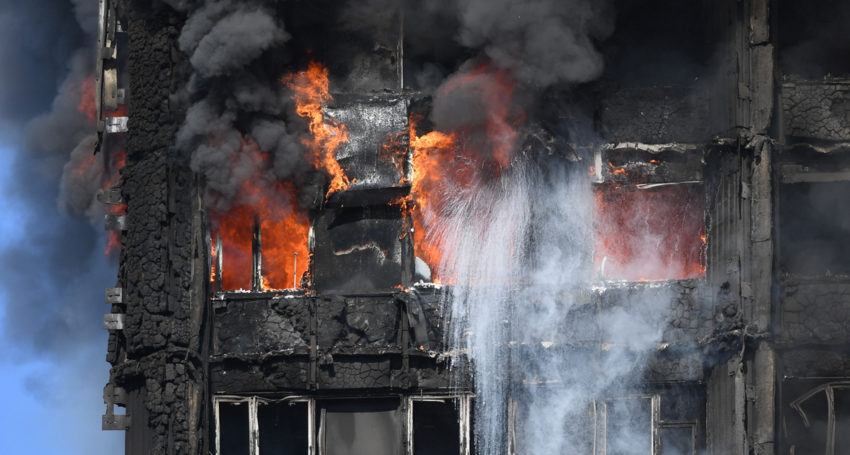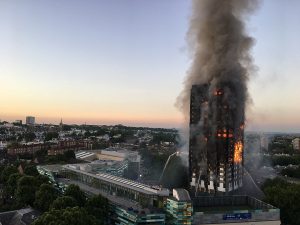
Cladding Danger of Grenfell Tower fire sends shudders through Australia’s property industry
Cladding audit marks 77 city buildings for further inquiry in Adelaide, and London’s enquiry fails to ban combustible cladding.
London:
In May 2018, Dame Judith Hackitt, a former Chair of the HSE, delivered her final recommendations following her Independent Review of Building Regulations and Fire Safety for the Department of Communities and Local Government (DCLG).
Hackitt concluded that indifference and ignorance had led to a “race to the bottom” in building safety practices and expressed the need for a “radical rethink of the whole system and how it works”. This included recommendations for recommends a “very clear model of risk ownership” and an “outcomes-based” regulatory framework but did not recommend an explicit ban on combustible cladding.
Grenfell housing
Following the report’s publication, the government said it would consult on banning combustible cladding. Housing Secretary James Brokenshire added that ministers will also look to ban the use of desktop studies to assess the performance of external cladding systems based on the BS 8414 test.
The cladding used on housing is one of the primary focuses of scrutiny following the Grenfell fire. An estimated 800 high rise buildings across the country use similar cladding to that found in Grenfell Tower. A number of tests into cladding have resulted in worrying results: Javid said in September that of 173 high-rise social housing blocks fitted with aluminium cladding, only eight passed fire safety building regulations.
It was revealed in March that only seven of the 158 social housing blocks in England with dangerous cladding have had the material completely removed. The government announced in May that it will fund a £400-million operation to remove dangerous cladding from tower blocks owned by councils and housing associations.
Earlier this month, Wales’ chief fire advisor Private high-rise cladding ‘could take years’ to replace.
Also under scrutiny is the standard advice to tenants of blocks of flats that they are safer if they stay in their accommodation than to leave unless it is their flat which is on fire.
Russ Timpson, Secretary of the Tall Building Fire Safety Network, called the tragedy the fire industry’s ‘asbestos moment’. He said: “We’ve now discovered a horrendous miscalculation. We’re going to be judged on how we respond to this, going forward.
“My concern is the people that are currently residing in these buildings around the world. What practical advice are we giving them to try and keep them safe, when a fire occurs?”Adelaide Oval and the new Royal Adelaide Hospital are among 77 city buildings earmarked for further investigation after a widespread audit in the wake of the London’s deadly Grenfell Tower fire.

Smoke billows from the fire that engulfed London's 24-storey Grenfell Tower.
Adelaide: An audit of cladding on 4500 buildings in Adelaide’s CBD revealed no safety risks, Planning Minister John Rau announced today, however, checks identified 77 buildings that warrant further consideration.
Rau said these were largely buildings “where occupants are likely to be unfamiliar with the means of escape or require assistance to escape”, including apartments, motels, hotels aged-care facilities, hospitals and schools, and structures authorities were “concerned about from a risk and safety point of view”, or whose façade incorporated “some element of aluminium composite panels” that were used as cladding in the London blaze.
Rau said 38 of the buildings earmarked “appear to have very limited or quite isolated panelling”, leaving 39 structures which will require further consideration.
He emphasised the panelling was “not in of itself illegal” nor necessarily dangerous.
“South Australians should not be alarmed at the use of aluminium composite cladding on buildings in the CBD,” he said, adding that “certified ACP cladding products are safe, when installed in accordance with the National Construction Code”.
Governments around Australia have recently undergone similar audits of buildings with aluminium composite panel cladding.
The SA review is being undertaken by the Planning Department, the MFS and Adelaide City Council.
MFS Chief fire officer Greg Crossman told reporters the nRAH and Adelaide Oval were among the significant public buildings identified for close attention in phase one of the testing process, along with the SAHMRI building and the Convention Centre.
But he emphasised that in “all of those buildings I can assure the community there is nothing to indicate there’s non-compliance”.
“Nothing on that list is identified as a high risk,” he said.
Of the new hospital, he said: “I can assure everybody that the cladding that was used in nRAH meets the conformity requirements of that building.”
“I have no concerns that the nRAH is not safe in regards to cladding,” he said, adding that it was “extremely safe” in all design elements.
Property Council SA Executive Director Daniel Gannon said the Grenfell Tower fire had “sent shudders through Australia’s property industry”.
“We already have high building standards in SA, but if there are lessons to learn from the UK then we should put that learning into practice,” he said.
“One area where we are working with government is non-compliant products. It’s in everyone’s interest to be sure that the materials specified for a project are what is delivered.
“Where sensible improvements can be made to improve the flow and availability of information on compliance with building codes, the industry will back them in.”
Master Builders SA boss Ian Markos said the audit had taken a “deliberate and grounded approach”.
“The State Government has done the right thing by taking a measured approach, not creating panic and fear when there was little cause,” he said.
“Of course we’re pleased that the audit has confirmed none representsildings represent a safety risk, and we’re interested in the second phase to see whether they comply with the National Construction Code and the focus on essential fire systems.”
But acting Opposition Leader Vickie Chapman called for the full audit to be released, saying “South Australians must be reassured that our buildings are safe and that this audit has been conducted properly”.
“The only way to do that is for the Government to release the audit report… I’m not going to just be taking John Rau at his word,” she said.
